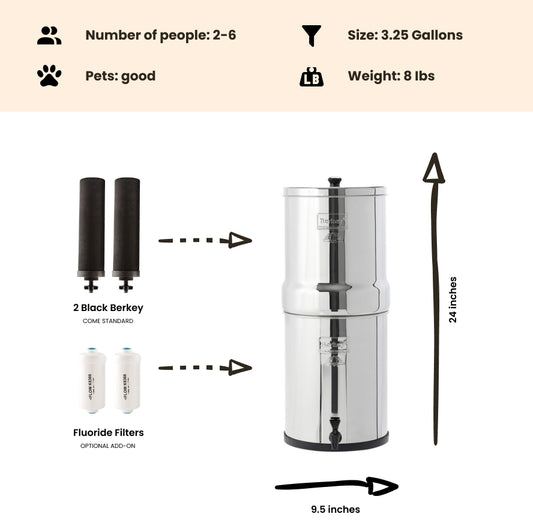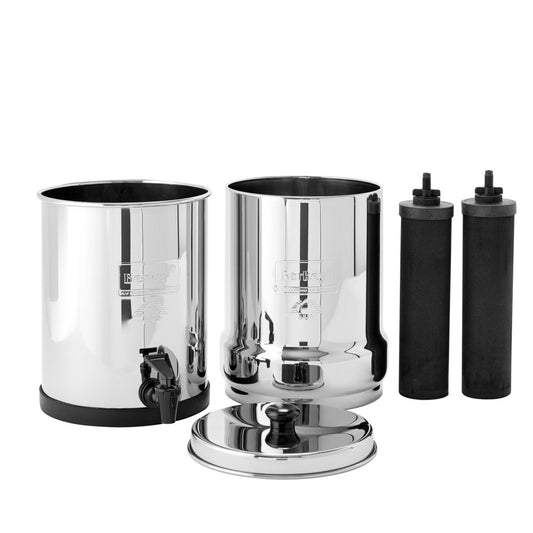
Combination of natural contaminants may pose greater risk in drinking water sourced from private wells
By Dan DeBaunShare
Naturally occurring contaminants that can be found together in certain geological formations could potentially pose an increased health risk for millions of residents in North Carolina who rely on private wells for their drinking water. Current drinking water safety regulations do not address the prevalent issue, according to a new study conducted by researchers from Duke University.
For the study, which was recently published in the scientific journal Environmental Science & Technology, the researchers tested groundwater samples collected from 1494 private drinking water wells located across the state of North Carolina and measured the concentrations of four naturally occurring contaminants: arsenic, chromium, uranium and vanadium in each water sample.
Guidelines for contaminants in drinking water are typically based on single elements or contaminants, said study co-author, Avner Vengosh, professor of geochemistry and water quality at Duke's Nicholas School of the Environment. These guidelines recommend how much arsenic or chromium is safe in drinking water. But they don't take into account or address situations where these contaminants occur together in drinking water, even though recent studies suggest that toxicity may increase when a person is exposed to multiple contaminants.
The study revealed water samples that contained the highest concentrations of these four elements originated from wells located in the Piedmont region of North Carolina which lies on top of fractured igneous and metamorphic geological formations — conditions that are also found underlying the Piedmont regions in South Carolina, Virginia and Georgia, as well as other regions around the world.

Here we see the naturally occurring concentrations of four contaminants found across the state of North Carolina. Credit: Vengosh Lab, Duke University
"Around 84% of the wells sampled in the Kings Mountain Belt and the Charlotte and Milton Belts of the Piedmont region contained concentrations of vanadium and chromium, in its more toxic hexavalent form, that exceeded health recommendations from the North Carolina Department of Health and Human Services," said Rachel Coyte, a doctoral student at Duke University, who led the study. Of the four elements studied, vanadium and chromium were found to co-occur most frequently, she said.
Vengosh is particularly concerned that 84% of approximately 1,500 wells in the area that were tested contained unsafe levels (by state health standards) of hexavalent chromium and vanadium. Yet, while 84% of wells tested exceed state health recommendations, none exceeded maximum contaminant levels set for drinking water standards set by the US Environmental Protection Agency (EPA), which according to Vengosh, is confusing. People who depend on private wells for their drinking water don't know which advise to heed. Do they listen to their state, who says contaminant levels are unsafe, or do they listen to the EPA, who says their water is perfectly safe to drink?
According to the EPA's drinking water standards, the maximum level for total chromium in drinking water is 0,1 parts per million (ppm), but it does not have a separate recommendation for hexavalent chromium (Chromium 6), which is a known to be carcinogenic, nor does it have a recommended safety level for vanadium.
Recognizing the increased risk of cancer that hexavalent chromium poses in drinking water, North Carolina state health department, by contrast, recommends a much lower level at 0.00007 parts per million, and 0.003 ppm for vanadium, which studies indicate may adversely affect the reproductive system and fetal development. Yet, neither the state or federal government recognizes the potential human health risks of these, or other potentially harmful elements, when they are present in drinking water together."As population growth and climate change impacts lead to increased water stress, communities in North Carolina and other other areas of the world are depending more heavily on groundwater to meet their drinking water requirements. It is therefore essential that we continue to monitor this vital resource using a systematic and comprehensive approach", said Coyte.
We also need to conduct further research to gain a better understanding of the health impacts associated with naturally occurring contaminants and combinations of these naturally occurring contaminants when exposed to them in drinking water.
Journal Reference Rachel M. Coyte and Avner Vengosh, Factors Controlling the Risks of Co-occurrence of the Redox-Sensitive Elements of Arsenic, Chromium, Vanadium, and Uranium in Groundwater from the Eastern United States, Environmental Science & Technology (2020). DOI: 10.1021/acs.est.9b06471"Only then can we understand who is being exposed, and what increased health risks, if any, they may face," said Coyte. "It's an answer we don't have now."
-
Regular price $234.00 USDRegular priceUnit price / per
-
Regular price $327.00 USDRegular priceUnit price / per
-
Regular price From $367.00 USDRegular priceUnit price / per
-
Regular price From $408.00 USDRegular priceUnit price / per
-
Regular price From $451.00 USDRegular priceUnit price / per
-
Regular price From $478.00 USDRegular priceUnit price / per
-
Regular price $332.50 USDRegular priceUnit price / per
$350.00 USDSale price $332.50 USDSale

Dan DeBaun is the owner and operator of Big Berkey Water Filters. Prior to Berkey, Dan was an asset manager for a major telecommunications company. He graduated from Rutgers with an undergraduate degree in industrial engineering, followed by an MBA in finance from Rutgers as well. Dan enjoys biohacking, exercising, meditation, beach life, and spending time with family and friends.
~ The Owner of Big Berkey Water Filters
















